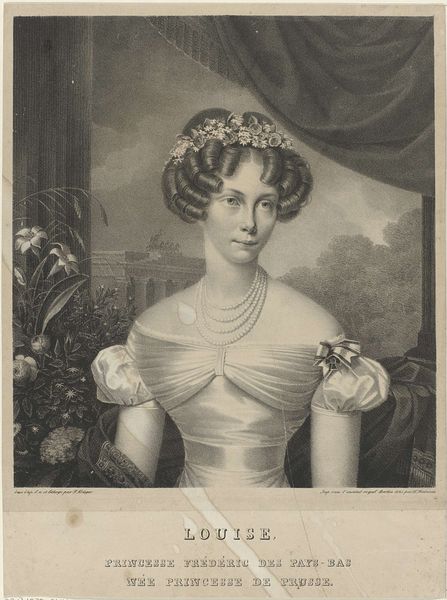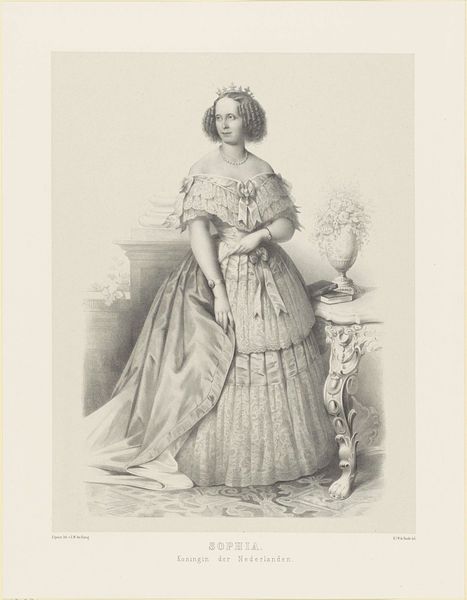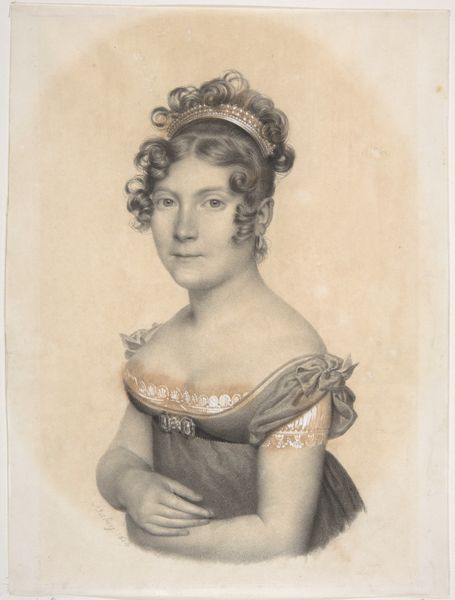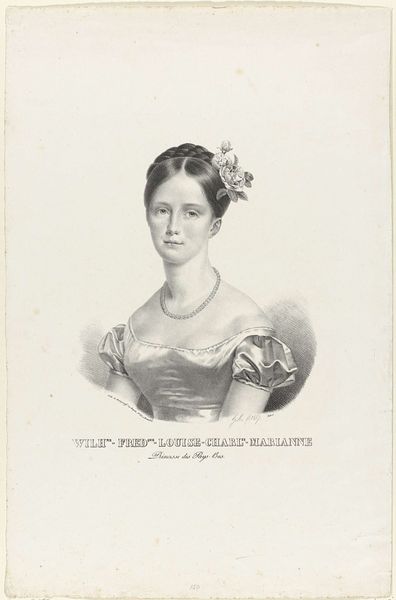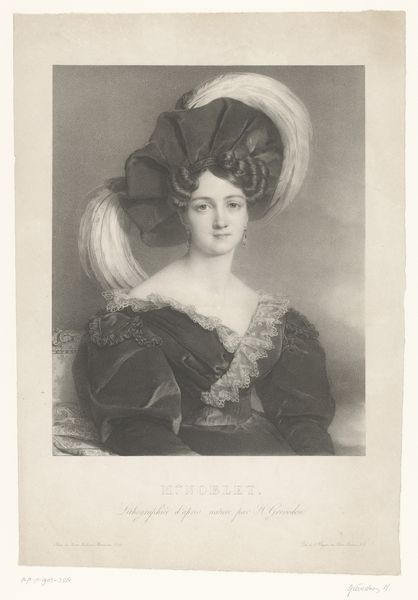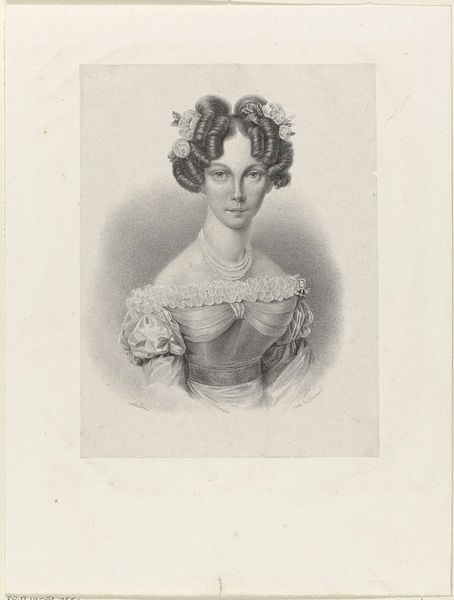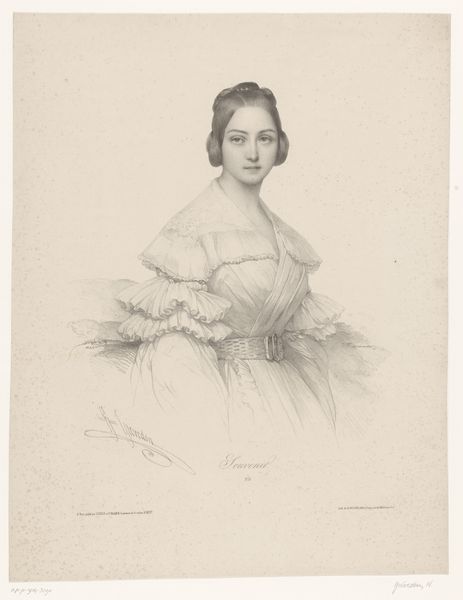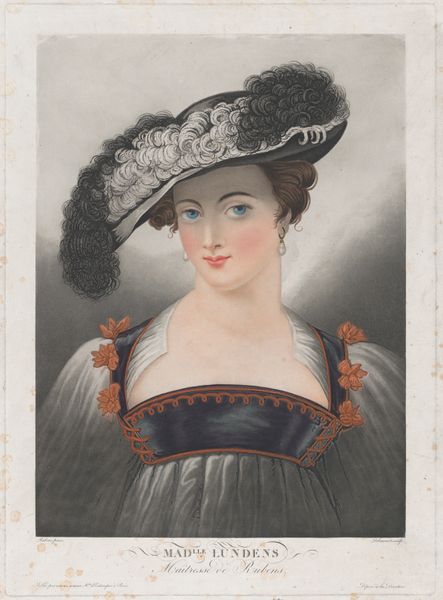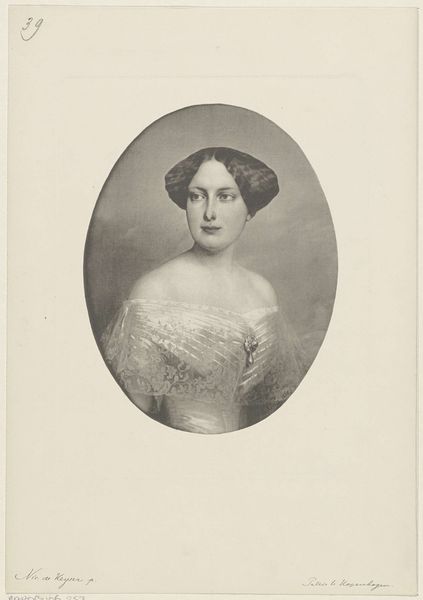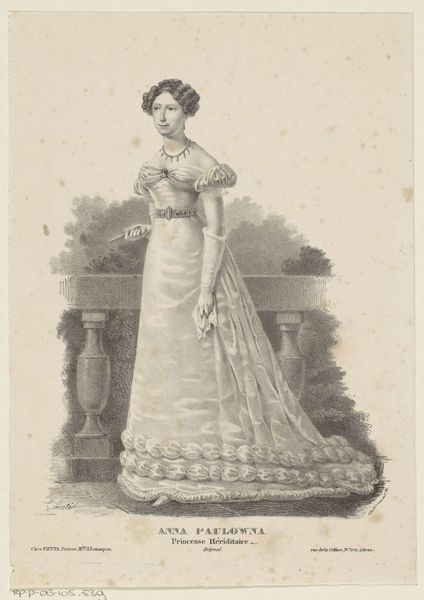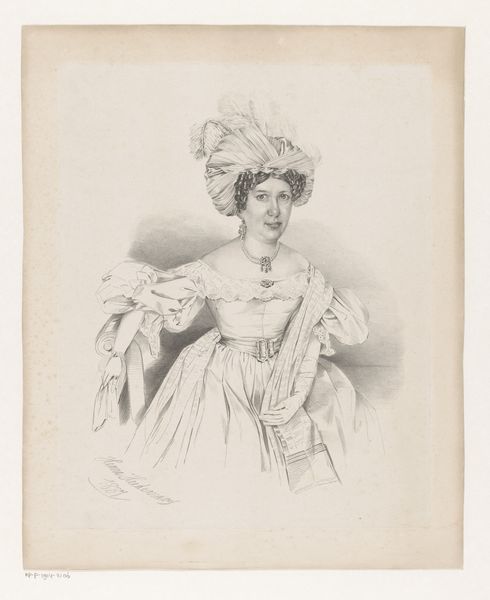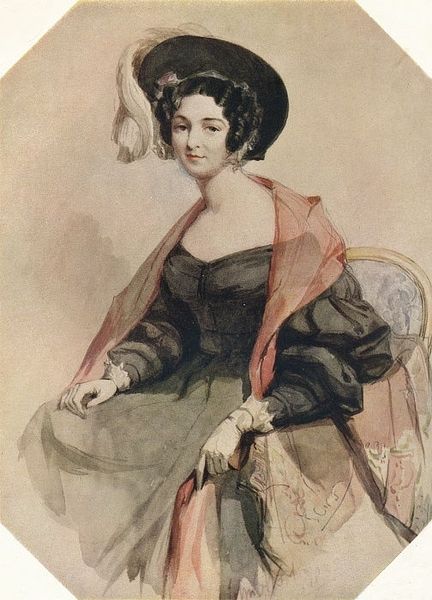
watercolor
#
portrait
#
figuration
#
watercolor
#
romanticism
#
genre-painting
Dimensions: 25 x 18 cm
Copyright: Public domain
Editor: Here we have "A Portrait of a Woman in a Bonnet with a Pink Ribbon," a watercolor piece created in 1837 by Alexander Clarot. The delicate use of color creates such a soft, almost dreamlike effect. What can you tell me about it? Curator: I am struck by the materials on display here: the bonnet, the shawl, the very construction of the dress. Look closely. It's not simply a representation of wealth, but an exhibition of production. Think of the labor involved in creating the lace of that bonnet, the weaving of the fabric, and even the extraction and preparation of the pigments used for the watercolor itself. How does understanding the processes alter our perception? Editor: I hadn't thought of it that way before, but it's true! Knowing that each delicate detail involved specialized skills and time really shifts the focus. Instead of just seeing a portrait of a lady, I see all of these different layers of craftsmanship. Curator: Precisely! And consider the social context. Portraiture in this era served as a means of displaying status, but it also acted as a form of consumption. Owning and commissioning art demonstrated not just financial means, but access to a specific cultural sphere. The artist provides a service using acquired material, can we talk about agency in this piece? Editor: It’s fascinating to consider this portrait not just as art, but also as a commodity, reflective of production methods and status displays. Does understanding these processes enhance your personal enjoyment of the artwork? Curator: Understanding the means of creation inevitably adds another layer to my experience. To me, it enriches the image with narratives of labor and social interaction. Editor: I will definitely look at art differently going forward.
Comments
No comments
Be the first to comment and join the conversation on the ultimate creative platform.
